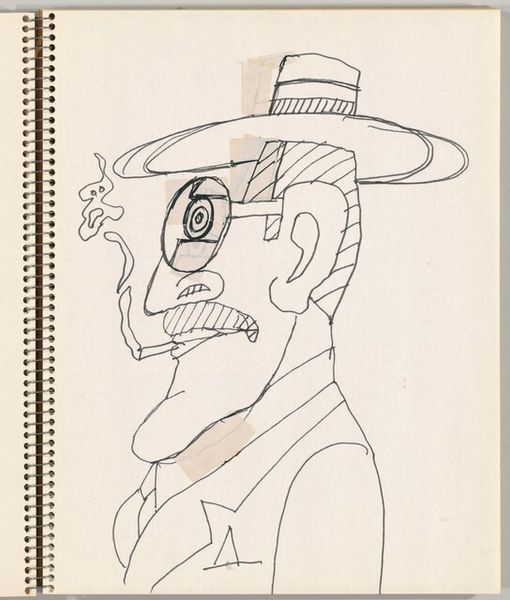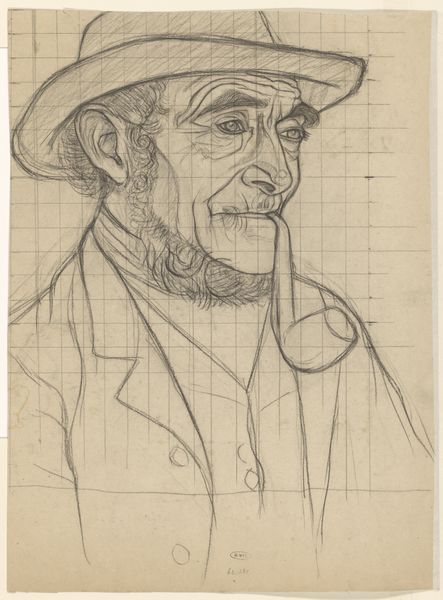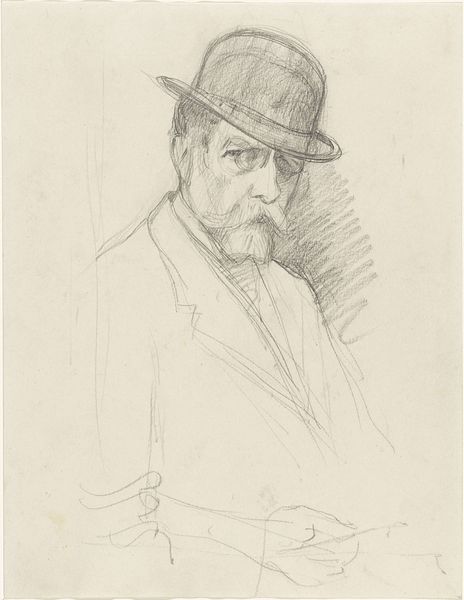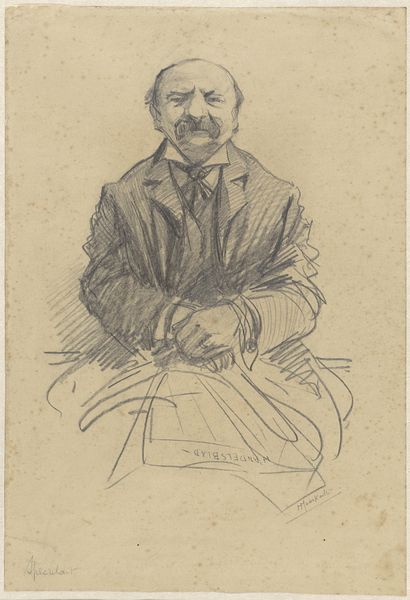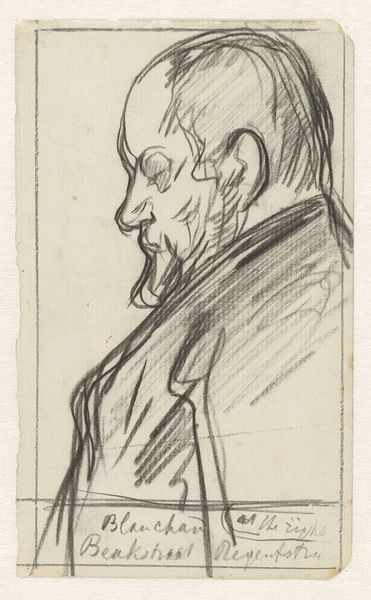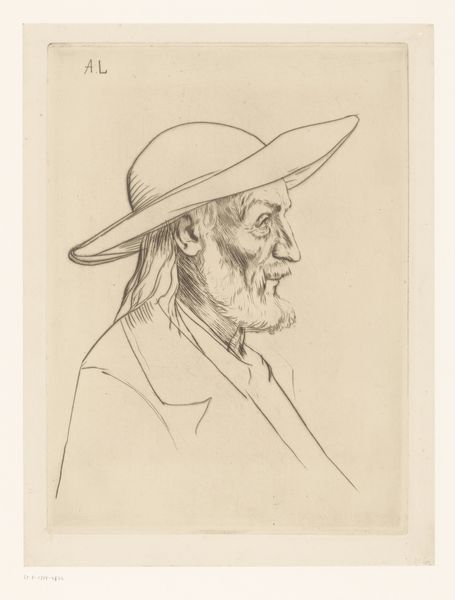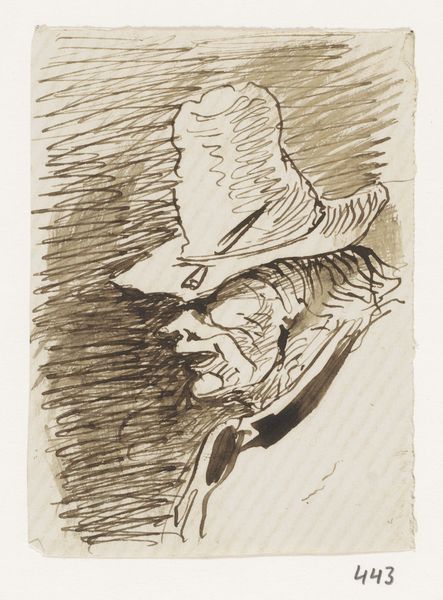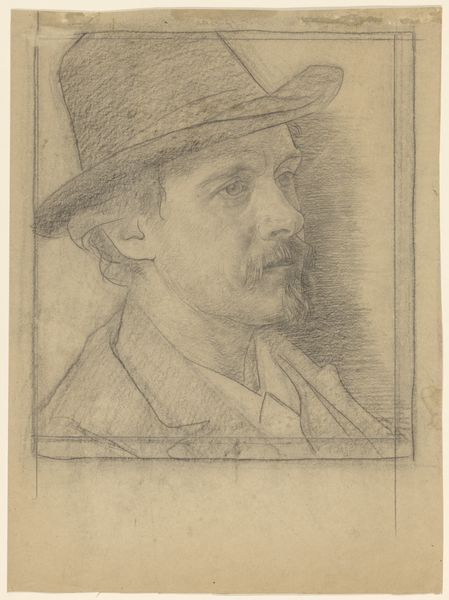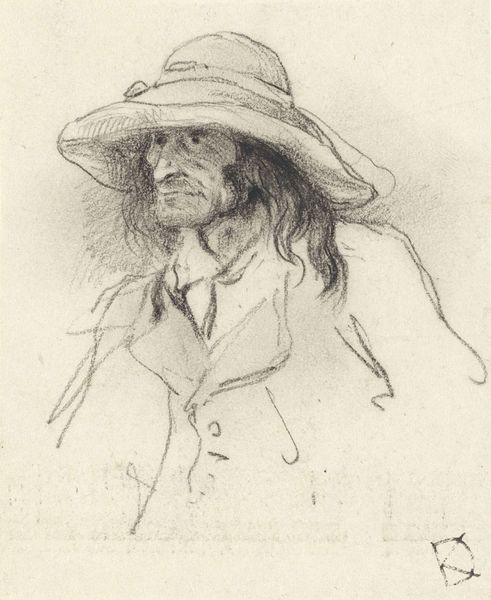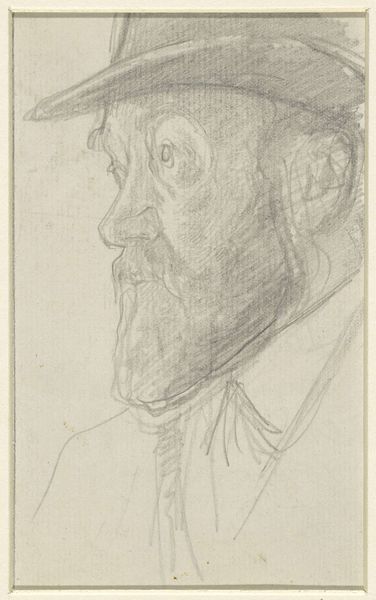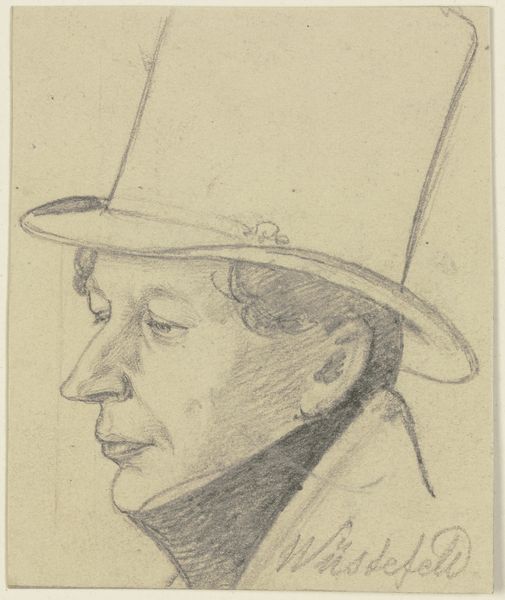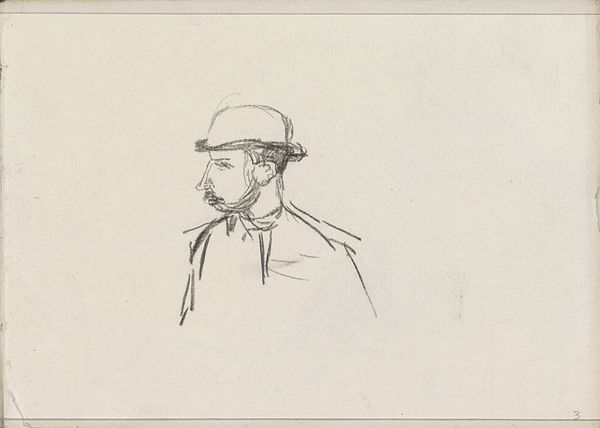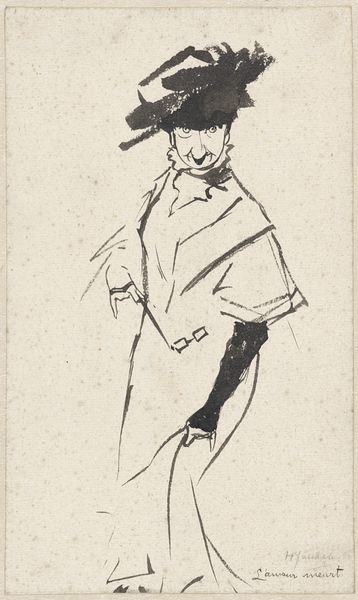
drawing, pencil
#
portrait
#
drawing
#
pencil sketch
#
pencil
#
realism
Dimensions: height 141 mm, width 84 mm
Copyright: Rijks Museum: Open Domain
Curator: The directness of the gaze in this pencil drawing is really striking, almost confrontational. Editor: Indeed. The "Portret van een heer met hoed en bril"—Portrait of a gentleman with hat and glasses—likely executed between 1869 and 1925, gives us a clear look at someone in their Sunday best. The rapid pencil strokes bring a sense of dynamism to a medium that has the perception of being slower. Curator: Exactly. You see the paper itself becomes a collaborative material, contrasting the quickness of gesture. This suggests the work might have been part of a preparatory process, maybe for a larger painting or commission. How does that inform his artistic choices and the reception of his finished work? Editor: The unfinished character does have an interesting effect on us now. As an institutional body, are we showing his work to celebrate craft and labor that is often overlooked by the high art tradition? And in so doing, challenge what art is and what is not? Curator: Well, portraits like this, were more than just about likeness, of course. Derkinderen's context plays a big part. The era during which it was made in Netherlands saw massive cultural and political shifts. Editor: He seems a fairly respectable fellow. You've got the well-groomed moustache and confident expression—even slightly intimidating perhaps, as if the viewer might have caused offence. You can imagine someone like this sitting in local government somewhere and making a speech. Curator: His face, partially obscured by shadow, only amplifies the tension in those lines around his eyes. I'm left considering how we interpret masculinity then and now. Editor: These fleeting drawings from artists like Antoon Derkinderen offer small glimpses into society. In terms of art, we consider process over product to give agency to the working artists and provide greater understanding. Curator: Right, and through understanding the processes involved, we learn a little bit more about what has, and has not, changed. Editor: Precisely. An enduring power dynamic we have the tools to explore more today than ever.
Comments
No comments
Be the first to comment and join the conversation on the ultimate creative platform.
